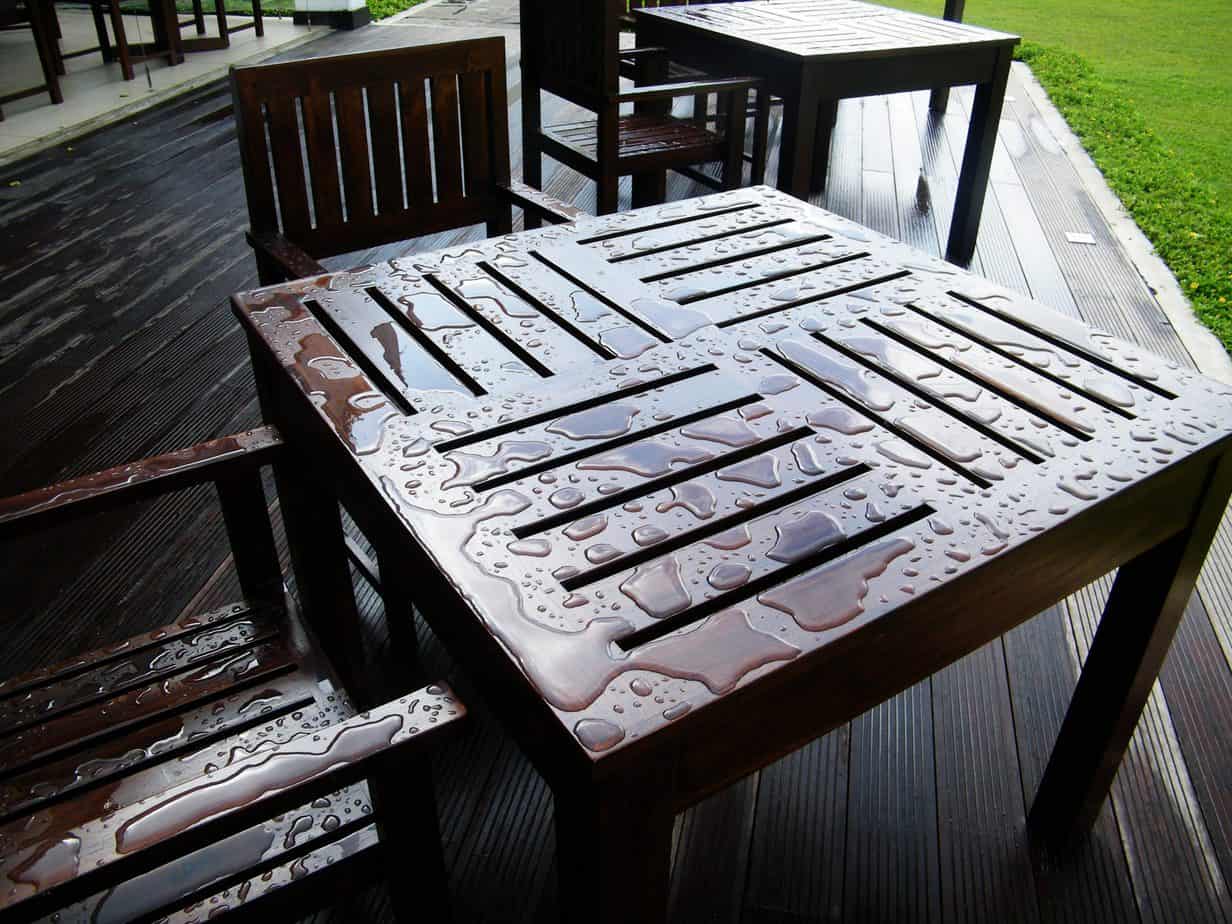

Articles
How To Waterproof Wood Furniture For Outdoors
Modified: October 19, 2024
Protect your outdoor furniture from the elements with our guide on how to waterproof wood furniture. Keep your furniture looking great and lasting longer.
(Many of the links in this article redirect to a specific reviewed product. Your purchase of these products through affiliate links helps to generate commission for Storables.com, at no extra cost. Learn more)
How To Waterproof Wood Furniture For Outdoors
Outdoor furniture adds beauty and functionality to our outdoor living spaces, but it is constantly exposed to the elements, which can cause damage and deterioration over time. One effective way to protect your outdoor wood furniture is by waterproofing it.
Waterproofing outdoor wood furniture is essential to prevent moisture penetration, which can lead to rot, warping, and other forms of damage. By taking the necessary steps to properly waterproof your furniture, you can ensure its longevity and maintain its appearance.
Key Takeaways:
- Protect outdoor wood furniture from moisture damage by choosing the right wood type, preparing the surface, and applying a suitable waterproofing product. Regular maintenance and reapplication ensure long-lasting protection and aesthetic appeal.
- Waterproofing outdoor wood furniture is essential for preventing rot, warping, and decay. Proper preparation, product selection, and application, followed by curing and maintenance, extend the furniture’s lifespan and preserve its beauty.
Read more: How To Paint Outdoor Wood Furniture
Understanding the Importance of Waterproofing Outdoor Wood Furniture
Wood is a natural material that is highly susceptible to water damage. When exposed to moisture, wood can absorb it, leading to swelling, warping, or even rotting. By applying a waterproofing sealant, you create a protective barrier that prevents water from seeping into the wood, minimizing the risk of damage.
Choosing the Right Type of Wood for Outdoor Furniture
Not all types of wood are suitable for outdoor use. Some woods, like teak, cedar, and cypress, are naturally more resistant to moisture and decay, making them ideal choices for outdoor furniture. However, if you have furniture made of other types of wood, it is still possible to protect it by applying a waterproofing sealant.
Preparing the Wood Surface for Waterproofing
Before applying any waterproofing product, it is important to prepare the wood surface. Start by thoroughly cleaning the furniture using a mild soap and water solution. Use a brush or sponge to remove any dirt, grime, or mold. Once the furniture is clean, allow it to dry completely before moving on to the next step.
Selecting the Appropriate Waterproofing Product
There are various types of waterproofing products available, such as oils, varnishes, and sealants. Each has its own pros and cons, so it is important to choose the one that suits your needs and the type of wood furniture you have. Consider factors like durability, ease of application, and the desired finish.
Read more: How To Restore Wood Outdoor Furniture
Applying the Waterproofing Product to the Wood Furniture
When applying the waterproofing product, make sure to follow the manufacturer’s instructions carefully. Use a brush, roller, or sprayer to apply an even coat of the product to the wood surface. Pay special attention to areas that are more exposed to the elements, such as the top of tables and armrests of chairs. Allow the product to penetrate the wood and then wipe off any excess.
Curing and Drying the Waterproofed Wood Furniture
After applying the waterproofing product, allow the furniture to cure and dry according to the manufacturer’s instructions. This will ensure that the product fully bonds to the wood and provides maximum protection. Keep the furniture in a well-ventilated area during this process to promote proper drying.
Maintaining and Reapplying Waterproofing as Needed
Regular maintenance is key to keeping your outdoor wood furniture in top condition. Periodically clean the furniture and inspect it for any signs of wear or damage. If the waterproofing starts to fade or wear off, it is time to reapply the waterproofing product. Always follow the manufacturer’s instructions when reapplying the product for the best results.
By following these steps, you can effectively waterproof your outdoor wood furniture and extend its lifespan. Properly maintaining and protecting your furniture will ensure that you can enjoy it for years to come, even in harsh weather conditions.
Remember, investing a little time and effort in waterproofing your outdoor wood furniture can save you the hassle and expense of replacing it in the future.
Introduction
Outdoor furniture is a wonderful addition to any backyard, patio, or deck. It provides us with a comfortable space to relax, dine, and entertain, allowing us to make the most of our outdoor living areas. However, outdoor furniture is constantly exposed to the elements, including rain, sun, and humidity, which can take a toll on its appearance and durability over time.
One of the key factors in protecting outdoor wood furniture is waterproofing. Waterproofing helps to prevent moisture penetration, which can lead to issues like warping, rotting, and mold growth. By taking the necessary steps to properly waterproof your wood furniture, you can help it withstand the challenges posed by outdoor conditions and extend its lifespan.
In this article, we will explore the importance of waterproofing outdoor wood furniture and guide you through the process of effectively protecting your furniture from water damage. We will discuss the types of wood that are suitable for outdoor use, the preparation steps prior to waterproofing, and the selection and application of the appropriate waterproofing products. Additionally, we will cover the curing and drying process, as well as the maintenance and reapplication of waterproofing as needed.
Properly waterproofing your outdoor furniture not only helps maintain its aesthetic appeal but also ensures its longevity and functionality. With the right techniques and products, you can enjoy your outdoor wood furniture for years to come, without worrying about the damaging effects of moisture.
So, if you’re ready to learn how to transform your outdoor wood furniture into an enduring and weather-resistant piece, let’s dive in and discover the secrets of effective waterproofing!
Key Takeaways:
- Protect outdoor wood furniture from moisture damage by choosing the right wood type, preparing the surface, and applying a suitable waterproofing product. Regular maintenance and reapplication ensure long-lasting protection and aesthetic appeal.
- Waterproofing outdoor wood furniture is essential for preventing rot, warping, and decay. Proper preparation, product selection, and application, followed by curing and maintenance, extend the furniture’s lifespan and preserve its beauty.
Read more: How To Paint Outdoor Wood Furniture
Understanding the Importance of Waterproofing Outdoor Wood Furniture
Outdoor wood furniture is constantly exposed to moisture from rain, snow, dew, and humidity. Without proper protection, this moisture can seep into the wood, leading to a range of issues such as rotting, warping, and cracking. Waterproofing your outdoor wood furniture is essential for several reasons:
1. Prevention of Rot and Decay: Wood is a natural material that is prone to rot and decay when exposed to moisture for extended periods. Water can penetrate the wood fibers, causing them to break down and ultimately leading to structural damage. By applying a waterproof sealant, you create a barrier that helps prevent moisture from seeping into the wood, reducing the risk of rot and decay.
2. Protection Against Warping: Wood naturally expands and contracts in response to changes in humidity and temperature. Excessive exposure to moisture can accelerate this process and cause the wood to warp and twist. Waterproofing your outdoor wood furniture helps minimize the absorption of moisture, thereby reducing the chances of warping and maintaining its original shape and integrity.
3. Resistance to Mold and Mildew: When wood furniture is consistently damp, it creates an ideal environment for the growth of mold and mildew. These fungi not only damage the appearance of the furniture but can also pose health risks. Waterproofing the wood creates a surface that is less hospitable to mold and mildew, keeping your furniture clean and hygienic.
4. Preserving the Aesthetic Appeal: Wood furniture adds warmth and beauty to outdoor spaces. Over time, exposure to the elements can cause the wood to fade, discolor, or develop a grayish appearance. Waterproofing your furniture helps protect it from UV rays and moisture, preserving its original color and beauty for years to come.
5. Prolonging Furniture Lifespan: Investing in outdoor wood furniture can be a significant expense. Waterproofing your furniture helps extend its lifespan, allowing you to enjoy it for many seasons to come. By protecting the wood from moisture-related damage, you minimize the need for costly repairs or premature replacement.
Overall, waterproofing your outdoor wood furniture is crucial for maintaining its structural integrity, preventing rot and decay, and preserving its aesthetic appeal. It is a proactive measure that can significantly enhance the longevity of your investment and ensure the ongoing enjoyment of your outdoor living space.
Choosing the Right Type of Wood for Outdoor Furniture
When it comes to outdoor furniture, selecting the right type of wood is crucial for ensuring durability and longevity. Not all woods are suitable for withstanding the harsh outdoor conditions. Here are some factors to consider when choosing wood for your outdoor furniture:
1. Natural Resistance to Moisture: Look for wood species that have inherent resistance to moisture. Cedar, teak, cypress, and redwood are popular choices known for their natural ability to repel water and resist rot. These woods contain natural oils and resins that act as a barrier against moisture, making them ideal for outdoor furniture.
2. Stability and Density: Outdoor wood furniture needs to withstand constant exposure to changes in humidity and temperature. Wood species with high density, such as teak and cedar, are less prone to warping and shrinking. These woods are known for their stability and ability to maintain their shape and structure over time.
3. Decay Resistance: In addition to moisture resistance, it’s essential to consider the wood’s resistance to decay and insect damage. Teak, for example, contains natural oils that make it highly resistant to decay and pests. Similarly, cedar contains oils that act as a natural deterrent to insects and fungi.
4. Hardness and Durability: Outdoor furniture needs to withstand regular use and exposure to the elements. Hardwoods like teak and mahogany are known for their durability and strength, making them excellent choices for outdoor environments. These woods are less likely to be damaged by impact or wear and tear.
5. Maintenance Requirements: Different woods have varying maintenance needs. Some woods, like teak and cedar, naturally weather to a beautiful silver-gray patina over time, requiring minimal maintenance. Other woods may require regular sealing or staining to maintain their appearance and protect against the elements. Consider your willingness to perform ongoing maintenance when choosing the type of wood.
6. Cost Considerations: The cost of wood can vary significantly based on availability, durability, and demand. Hardwoods like teak and mahogany tend to be more expensive, while softer woods like pine and fir are often more affordable. Consider your budget and balance it with the desired durability and aesthetics of the wood.
7. Sustainable Sourcing: Consider choosing wood from sustainably managed forests or those certified by organizations like the Forest Stewardship Council (FSC). This ensures that the wood is harvested responsibly, promoting the preservation of forests and reducing the environmental impact.
By carefully selecting the right type of wood for your outdoor furniture, you can ensure that it can withstand the outdoor environment and provide you with years of enjoyment. Take into account factors such as natural resistance to moisture, stability, density, decay resistance, hardness, maintenance requirements, cost, and sustainability to make an informed choice.
Preparing the Wood Surface for Waterproofing
Before applying any waterproofing product to your outdoor wood furniture, it’s crucial to properly prepare the wood surface. This preparation ensures optimal adhesion and effectiveness of the waterproofing sealant. Here are the steps to follow:
1. Clean the Furniture: Start by thoroughly cleaning the surface of the furniture. Remove any dust, dirt, or debris using a brush or a soft cloth. For tougher stains or mildew, you can use a mild soap or wood cleaner along with water. Scrub the furniture gently, making sure to reach all crevices and corners.
2. Rinse and Dry Completely: After cleaning, rinse the furniture with clean water to remove any residue from the cleaning solution. Ensure that all soap or cleaner is washed away. Allow the furniture to air dry completely before proceeding. If needed, you can use a clean cloth or towel to speed up the drying process.
3. Sand the Wood: Once the furniture is dry, sand the wood surface lightly. The aim is to create a smooth and clean surface for the waterproofing product to adhere to. Use a fine-grit sandpaper, and sand in the direction of the wood grain. Sanding helps remove any rough or uneven spots and opens up the pores of the wood, promoting better absorption of the waterproofing sealant.
4. Remove Sanding Residue: After sanding, it’s vital to remove any sanding residue from the wood surface. Use a soft brush or a clean cloth to sweep away the sanding dust. You can also lightly dampen a cloth to wipe away any remaining dust particles. Allow the furniture to dry again after this step.
5. Check for Damage: While preparing the wood surface, take the opportunity to inspect the furniture for any damage or defects. Look for cracks, loose joints, or any areas that may need repair. Address these issues before applying the waterproofing product to ensure the longevity of your furniture.
By properly preparing the wood surface, you create an ideal foundation for the waterproofing product to adhere to. Cleaning the furniture removes any dirt or grime that may hinder the effectiveness of the sealant. Sanding helps to smooth the surface and maximize the absorption of the waterproofing product. Removing the sanding residue ensures a clean surface, allowing for proper bonding of the sealant. Additionally, inspecting the furniture for damage allows you to make any necessary repairs before applying the waterproofing.
Take the time to follow these steps to prepare your wood furniture properly. Doing so will ensure that the waterproofing product can effectively protect your outdoor furniture, extending its lifespan and maintaining its appearance in the face of outdoor elements.
Selecting the Appropriate Waterproofing Product
When it comes to waterproofing your outdoor wood furniture, choosing the right product is essential. There are several types of waterproofing products available, each with its pros and cons. Consider the following factors to select the most appropriate waterproofing product for your furniture:
1. Type of Wood: Different types of wood may require different types of waterproofing products. Some woods, like teak and cedar, contain natural oils that make them naturally resistant to moisture. These woods may only require a simple oil-based sealant to enhance their natural properties. However, other woods may need more comprehensive protection, such as a penetrating sealant or a waterproofing varnish.
2. Level of Protection: Waterproofing products offer varying levels of protection. Some products provide a basic water-resistant barrier, while others offer additional protection against UV rays, mold, and mildew. Consider the level of exposure your furniture will have to sunlight and moisture to determine the level of protection you need.
3. Penetrating vs. Surface Sealants: Waterproofing products can be divided into penetrating sealants and surface sealants. Penetrating sealants penetrate into the wood fibers, providing thorough protection from within. They are suitable for woods with a natural resistance to moisture. Surface sealants, on the other hand, create a protective layer on the surface of the wood. They are best for woods that are less resistant to moisture. Consider the type of wood you have and choose a waterproofing product that complements its characteristics.
4. Application Method: Different waterproofing products have different application methods. Some are sprayed on, while others are brushed or rolled onto the wood surface. Consider your level of comfort and skill with various application methods and choose a product that aligns with your preferences.
5. Durability and Longevity: Consider the durability and longevity of the waterproofing product. Some products may require more frequent reapplication, while others offer long-lasting protection. Research customer reviews and product specifications to determine how well the product holds up over time.
6. Environmental Considerations: Pay attention to the environmental impact of the waterproofing product. Look for products that are low in volatile organic compounds (VOCs) and environmentally friendly. Consider eco-friendly alternatives such as water-based sealants or products with natural ingredients.
7. Desired Finish: Waterproofing products can enhance the natural beauty of the wood or alter its appearance. Some products maintain the wood’s natural color, while others provide a glossy or matte finish. Consider the desired aesthetic outcome and choose a product that aligns with your vision for your outdoor furniture.
Ultimately, the choice of the appropriate waterproofing product depends on your specific needs and the type of wood furniture you have. Consider factors such as the type of wood, level of protection, application method, durability, environmental impact, and desired finish. By selecting the right product, you can ensure long-lasting and effective waterproofing for your outdoor wood furniture.
Read more: How To Restore Wood Outdoor Furniture
Applying the Waterproofing Product to the Wood Furniture
Once you have selected the appropriate waterproofing product for your outdoor wood furniture, it’s time to apply it to the surface. Proper application ensures that the product effectively protects the wood and enhances its longevity. Follow these steps for a successful application:
1. Read and Follow the Instructions: Before beginning the application, carefully read and understand the manufacturer’s instructions on the product label. Each waterproofing product may have specific guidelines and recommended application techniques.
2. Prepare the Area: Choose a well-ventilated area for applying the waterproofing product. Protect the surrounding surfaces, such as nearby plants or concrete, by covering them with a drop cloth or plastic sheeting. This will prevent any potential stains or damage from the product.
3. Stir the Product: If the waterproofing product requires stirring, use a stir stick or a paint mixing tool to ensure that it is well-mixed. This helps distribute any settling or separation that may have occurred during storage.
4. Test on a Small Area: Before applying the waterproofing product to the entire furniture, it’s a good idea to perform a test on a small inconspicuous area. This allows you to evaluate the color, finish, and compatibility of the product with your wood furniture.
5. Apply the Product: Using a brush, roller, or sprayer, apply an even coat of the waterproofing product to the wood surface. Follow the manufacturer’s instructions regarding the application method. Start from the top and work your way down, covering all sides and angles of the furniture. Pay extra attention to areas that are more exposed to the elements, such as the top of tables and armrests of chairs.
6. Allow for Penetration: Some waterproofing products require time for penetration into the wood. Follow the recommended waiting period specified by the manufacturer. This allows the product to soak into the wood fibers and establish a protective barrier against moisture.
7. Wipe Off Excess: After the recommended waiting period, gently wipe off any excess product that has not absorbed into the wood. Use a clean cloth or rag to achieve a smooth, even finish. This step helps prevent the formation of a sticky or tacky surface on the furniture.
8. Allow for Drying: Allow the furniture to dry completely according to the manufacturer’s instructions before placing it back in its desired location. This drying period ensures that the waterproofing product properly bonds to the wood and provides optimal protection.
Remember to take breaks as needed during the application process to avoid fatigue and ensure consistent and thorough coverage. Proper application of the waterproofing product is crucial for its effectiveness and the long-term protection of your outdoor wood furniture.
Lastly, always dispose of any leftover product or cleaning materials responsibly, following local regulations and guidelines.
Curing and Drying the Waterproofed Wood Furniture
After applying the waterproofing product to your outdoor wood furniture, it’s important to allow it to cure and dry properly. This ensures a strong bond between the wood and the waterproofing sealant and maximizes the effectiveness of the protection. Follow these steps to properly cure and dry your waterproofed wood furniture:
1. Follow Manufacturer’s Instructions: Every waterproofing product has specific guidelines regarding the curing and drying process. Read the manufacturer’s instructions carefully and follow them precisely. This includes the recommended curing time and drying conditions.
2. Allow Sufficient Curing Time: Curing refers to the process of the waterproofing product fully bonding to the wood. The curing time can vary depending on the product and environmental conditions. It’s crucial to allow sufficient curing time before subjecting the furniture to moisture or putting it back into regular use. This may range from a few hours to several days, so be patient and avoid rushing the process.
3. Choose a Well-Ventilated Area: During the curing process, it’s important to ensure proper airflow to allow for evaporation of solvents and chemicals in the waterproofing product. Choose a well-ventilated area for curing the furniture. This could be an open outdoor space or a well-ventilated indoor area with windows or fans.
4. Maintain Ideal Temperature and Humidity: The temperature and humidity levels in the curing area can affect the drying time and the overall quality of the finish. Check the manufacturer’s instructions for the recommended temperature and humidity range and try to maintain these conditions as closely as possible. Avoid curing the furniture in extreme temperatures or high humidity levels, as this can negatively impact the drying process.
5. Avoid Exposure to Moisture: During the curing and drying period, it’s crucial to protect the waterproofed furniture from exposure to moisture. This includes rain, dew, and even excessive humidity. If possible, move the furniture to a covered area during this time. If that’s not feasible, cover the furniture with a waterproof tarp or sheet to shield it from moisture.
6. Check for Tackiness: After the recommended curing time, check the surface of the furniture for any tackiness. If the waterproofing product feels sticky or tacky to the touch, it may not have fully dried. In this case, give it additional time to cure and dry before using or subjecting to more demanding conditions.
7. Test for Dryness: To ensure proper drying, perform a simple test on a small inconspicuous area. Press a finger lightly onto the surface of the furniture. If it leaves no impression or residue, the furniture is likely dry and ready for use. However, if there is any transfer of sticky residue, the furniture needs more drying time.
By allowing your waterproofed wood furniture to properly cure and dry, you are ensuring the longevity and effectiveness of the waterproofing product. The curing and drying process helps the product bond with the wood, creating a strong barrier against moisture and extending the life of your outdoor furniture.
Once the furniture is fully cured and dried, you can safely place it back in your outdoor living area and enjoy its protected beauty and functionality.
Maintaining and Reapplying Waterproofing as Needed
Proper maintenance is key to preserving the waterproofing and overall condition of your outdoor wood furniture. Over time, the protective barrier provided by the waterproofing product may start to wear off due to exposure to weather elements and regular use. Here are some tips for maintaining and reapplying waterproofing as needed:
1. Regular Cleaning: Regularly clean your outdoor wood furniture to remove dirt, debris, and any other substances that can compromise the waterproofing. Use a mild soap or specialized wood cleaner and a soft brush or cloth to gently scrub the surfaces. Rinse thoroughly with water and allow the furniture to dry completely.
2. Visual Inspection: Periodically inspect your furniture for any signs of wear or damage. Look for areas where the waterproofing may have faded or peeled, exposing the wood to moisture. Check for any cracks, splits, or mold growth. Address any issues immediately to prevent further damage.
3. Spot Treatment: If you notice any localized areas that are particularly worn or vulnerable, consider spot treatment. Use sandpaper to remove any loose or peeling waterproofing and prep the surface. Then, apply a fresh coat of the same waterproofing product to the affected areas. This can help maintain the integrity of the protective layer and prevent localized damage from worsening.
4. Reapply Waterproofing: Depending on the type of wood, the climate, and the quality of the initial waterproofing, you may need to reapply the waterproofing product periodically. Check the manufacturer’s instructions for their recommended timeline or guidelines. As a general rule, it’s recommended to reapply waterproofing every 1-3 years, or as soon as you notice signs of fading or decreased water repellency.
5. Surface Preparation: Before reapplying the waterproofing product, prepare the wood surfaces by cleaning and, if necessary, lightly sanding to create a smooth and receptive surface. Remove any remaining traces of the previous application to ensure proper adhesion of the new waterproofing layer. Clean the surface again to remove any dust or debris generated from sanding.
6. Follow Application Instructions: When reapplying the waterproofing product, follow the manufacturer’s instructions carefully. Apply the product evenly and generously, paying special attention to areas that are more exposed to moisture or receive higher traffic. Consider applying multiple thin coats rather than one thick coat for better penetration and coverage.
7. Allow for Drying and Curing: After the reapplication, allow the furniture to dry and cure according to the manufacturer’s instructions. Maintain a well-ventilated area, and protect the furniture from moisture during this time. This will ensure proper bonding of the new layer of waterproofing and optimize its effectiveness.
Remember, keeping up with regular maintenance and reapplying waterproofing as needed are essential for ensuring the long-term protection and beauty of your outdoor wood furniture. By investing a little time and effort into maintenance, you will extend the lifespan of your furniture and continue to enjoy its functional and aesthetic benefits for years to come.
Conclusion
Waterproofing your outdoor wood furniture is a crucial step in ensuring its longevity, durability, and aesthetic appeal. By protecting the wood from moisture damage, you can enjoy your furniture for many years, even in challenging outdoor environments.
Understanding the importance of waterproofing, choosing the right type of wood, and properly preparing the wood surface are essential in the process. Selecting the appropriate waterproofing product and applying it correctly to the furniture’s surface further enhances its protection. Curing and drying the waterproofed wood furniture allows the sealant to effectively bond with the wood fibers, while proper maintenance and reapplication of the waterproofing product as needed ensure ongoing protection.
Maintaining your outdoor wood furniture and regularly cleaning it are crucial in preserving the waterproofing and preventing any damage. Visual inspections, spot treatments, and reapplying the waterproofing product when necessary help maintain the integrity of the protective barrier. By following these steps, you can ensure that your outdoor wood furniture remains beautiful, functional, and resistant to moisture and the elements.
In conclusion, investing the time and effort into waterproofing your outdoor wood furniture is a worthwhile endeavor. It not only extends the lifespan of your furniture but also enhances its appearance and protects it against rot, warping, mold, and other types of damage. With proper maintenance and periodic reapplication of the waterproofing product, your outdoor wood furniture will continue to provide you with years of enjoyment and withstand the challenges of outdoor conditions.
So, take the necessary steps to waterproof your outdoor wood furniture today and enjoy the peace of mind that comes with knowing your investment is protected for the long haul.
Frequently Asked Questions about How To Waterproof Wood Furniture For Outdoors
Was this page helpful?
At Storables.com, we guarantee accurate and reliable information. Our content, validated by Expert Board Contributors, is crafted following stringent Editorial Policies. We're committed to providing you with well-researched, expert-backed insights for all your informational needs.
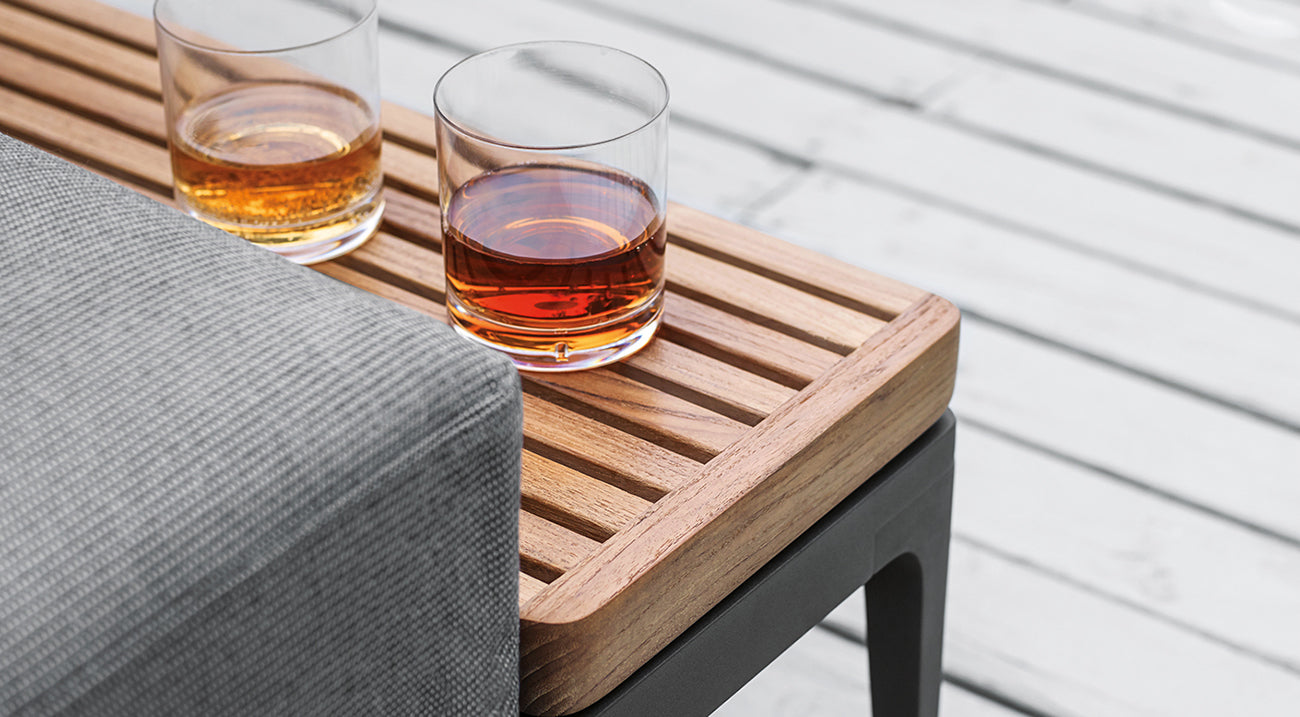
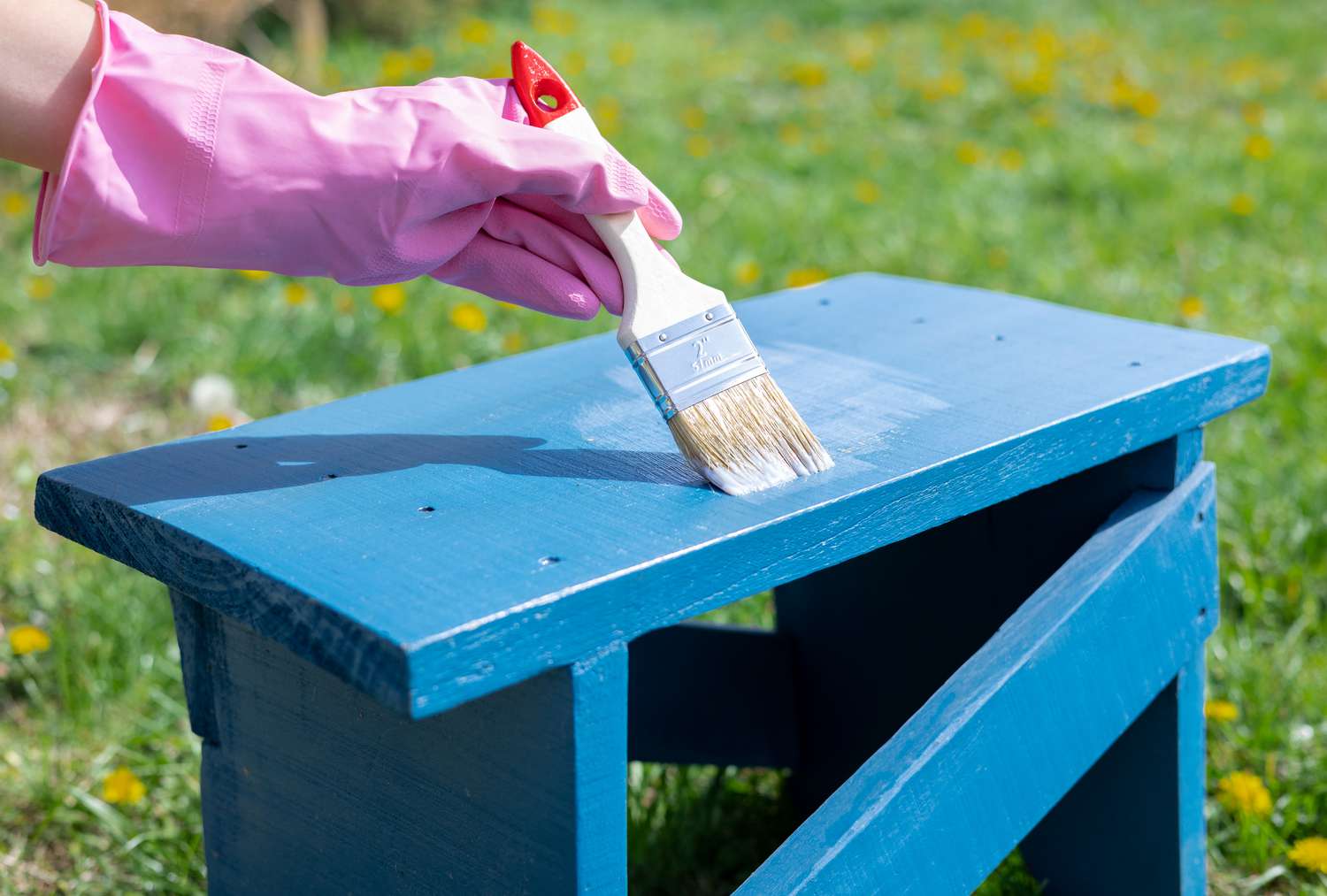
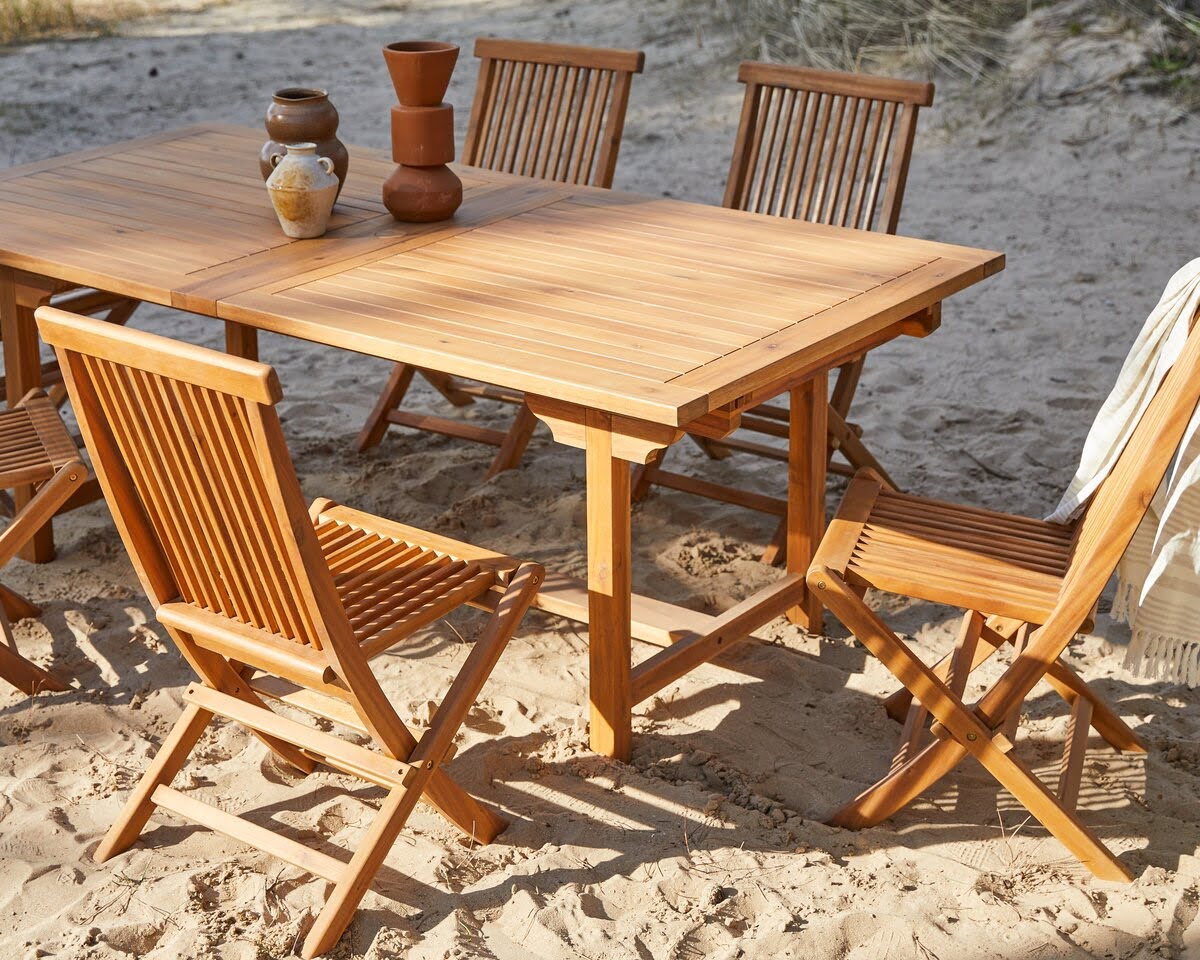

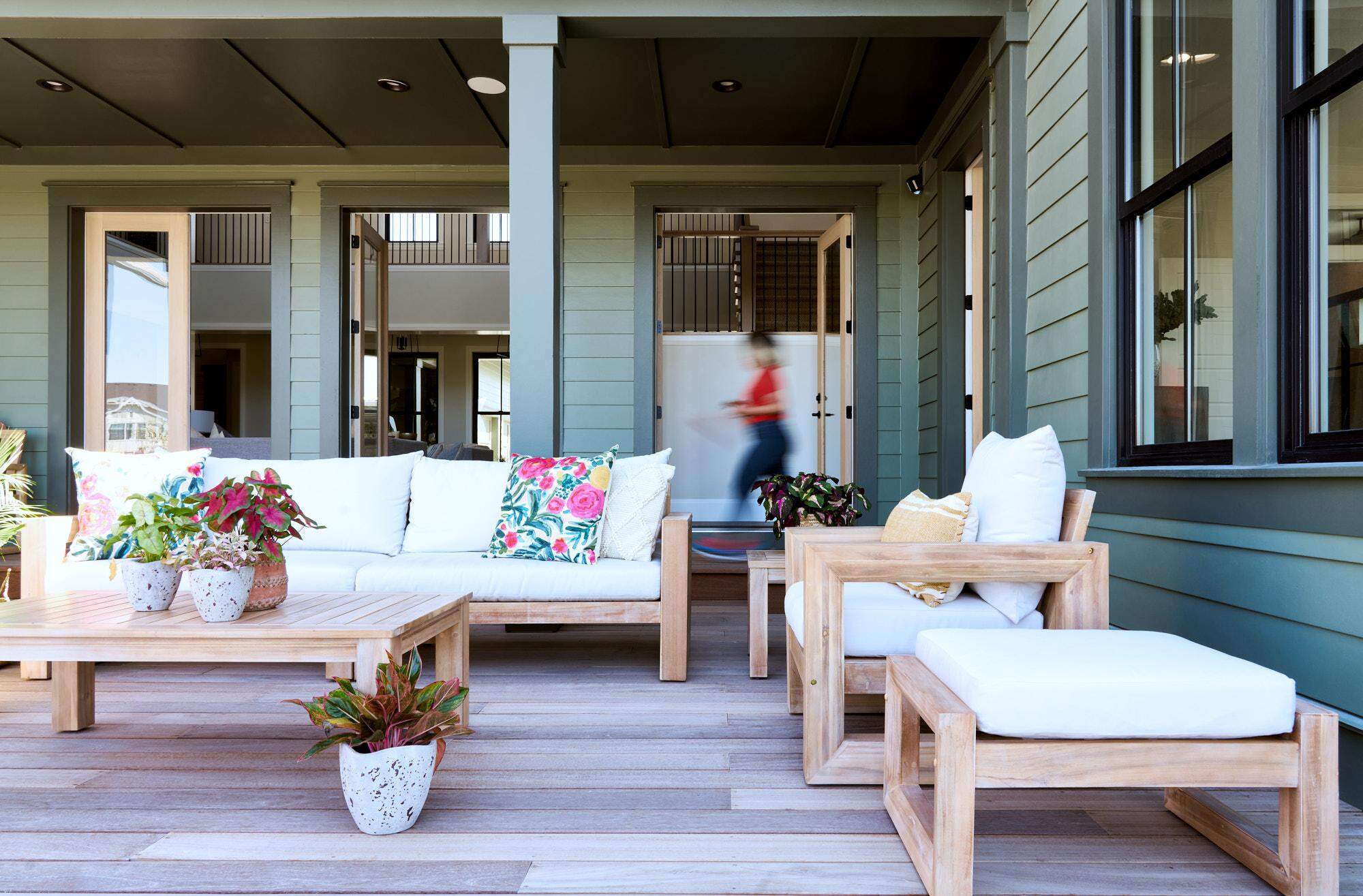
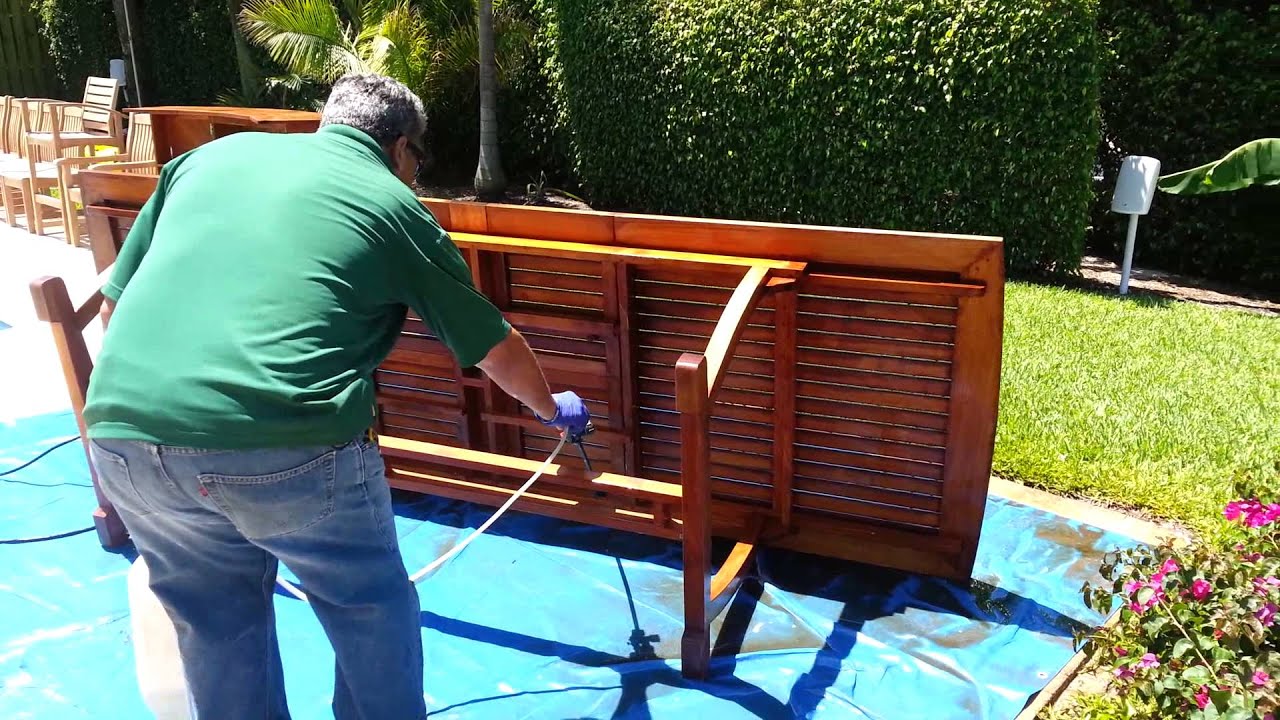
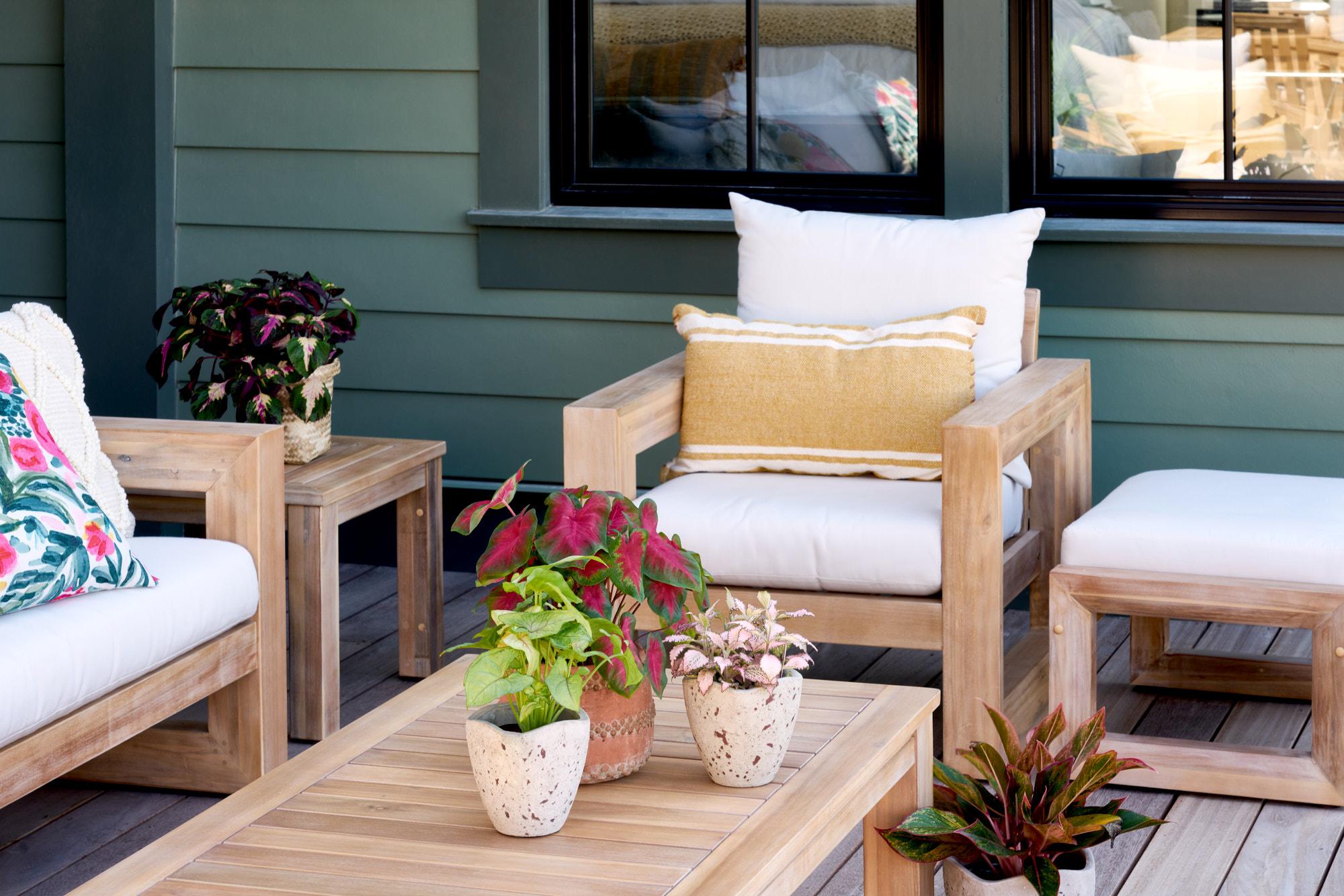
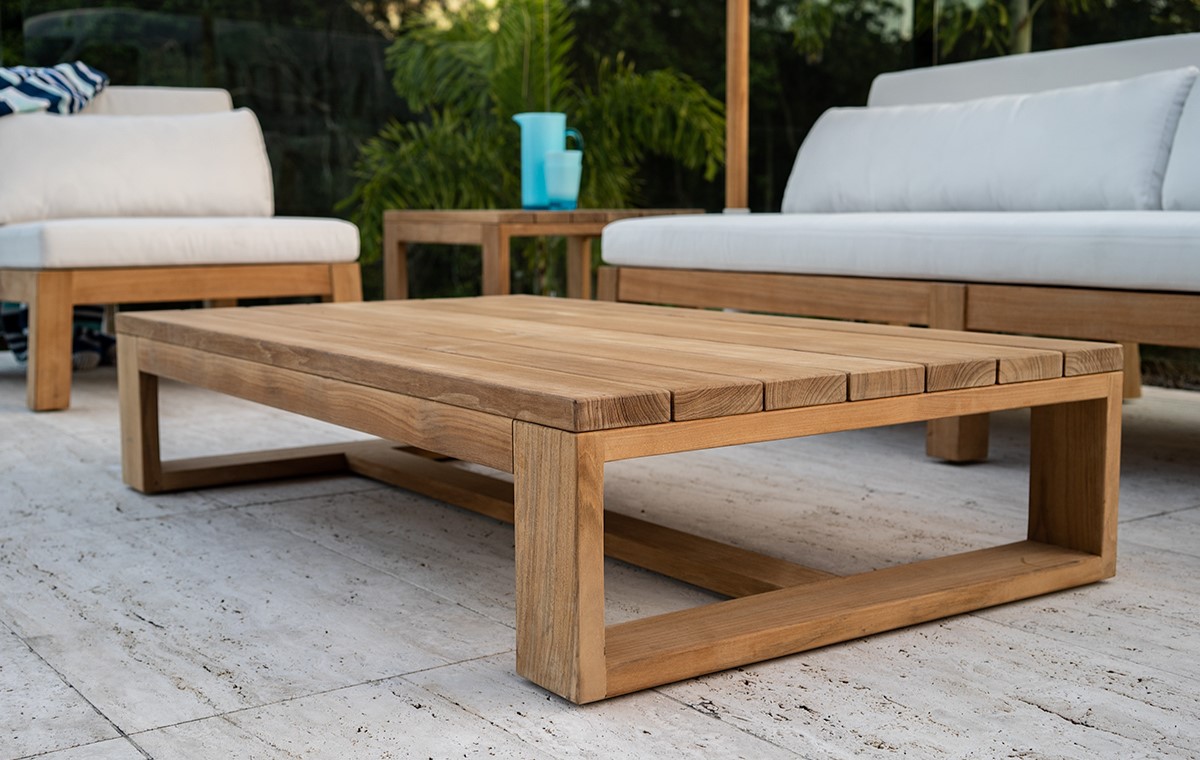
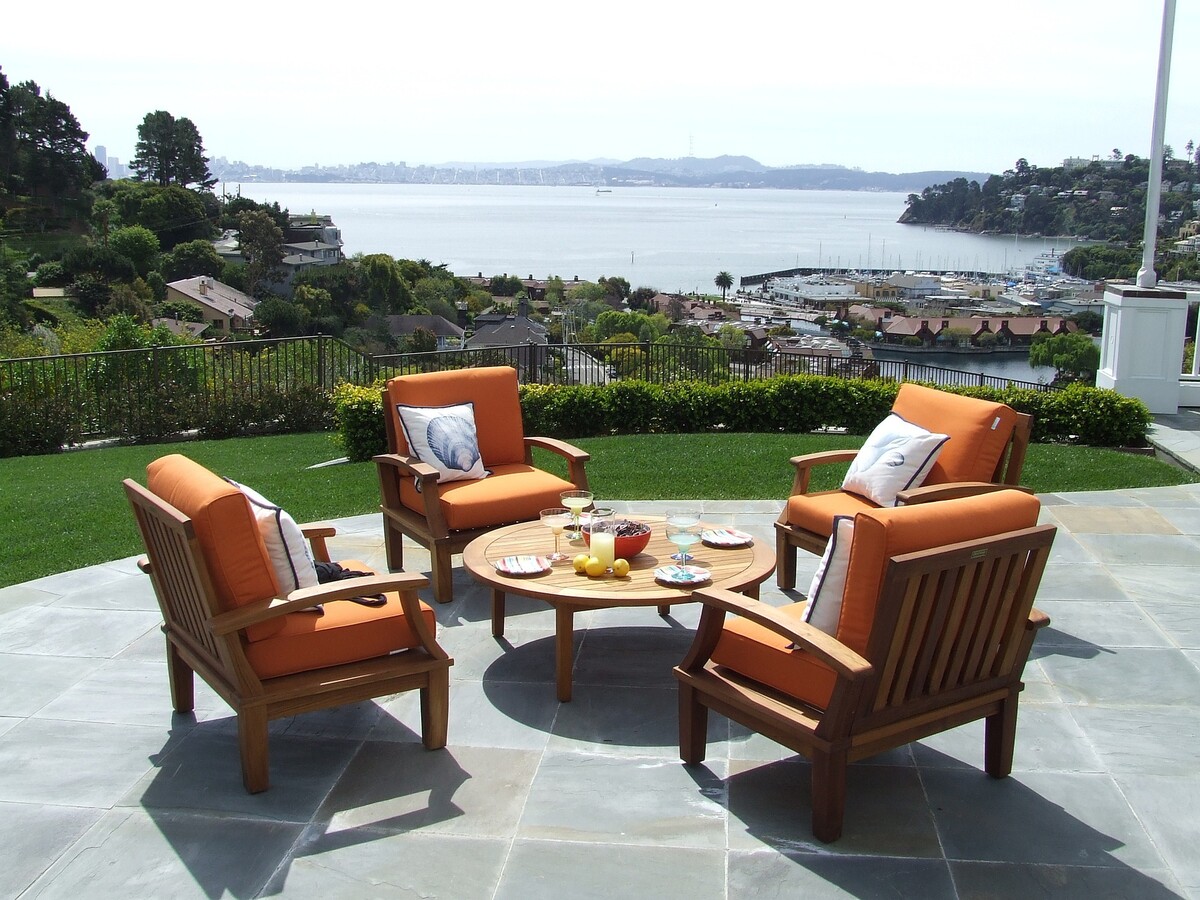
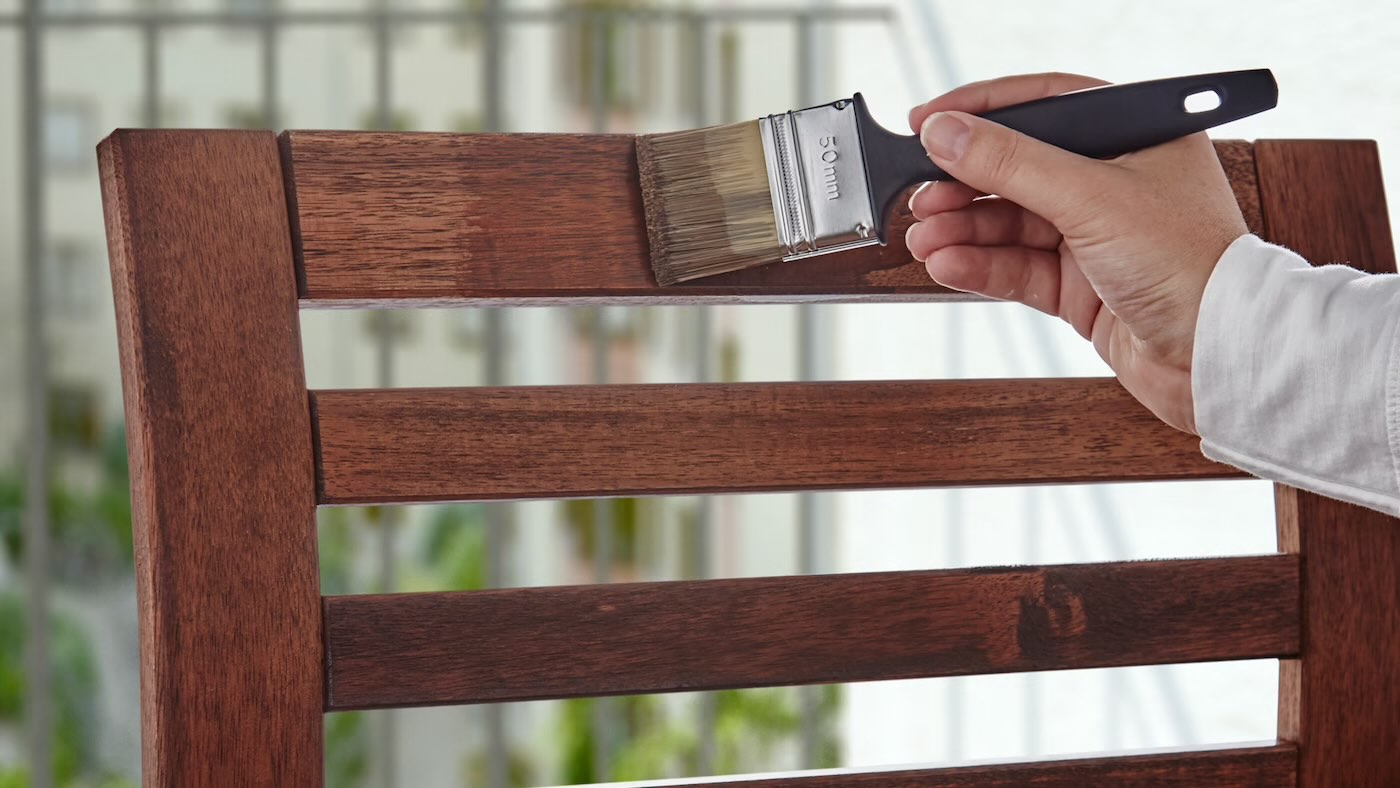
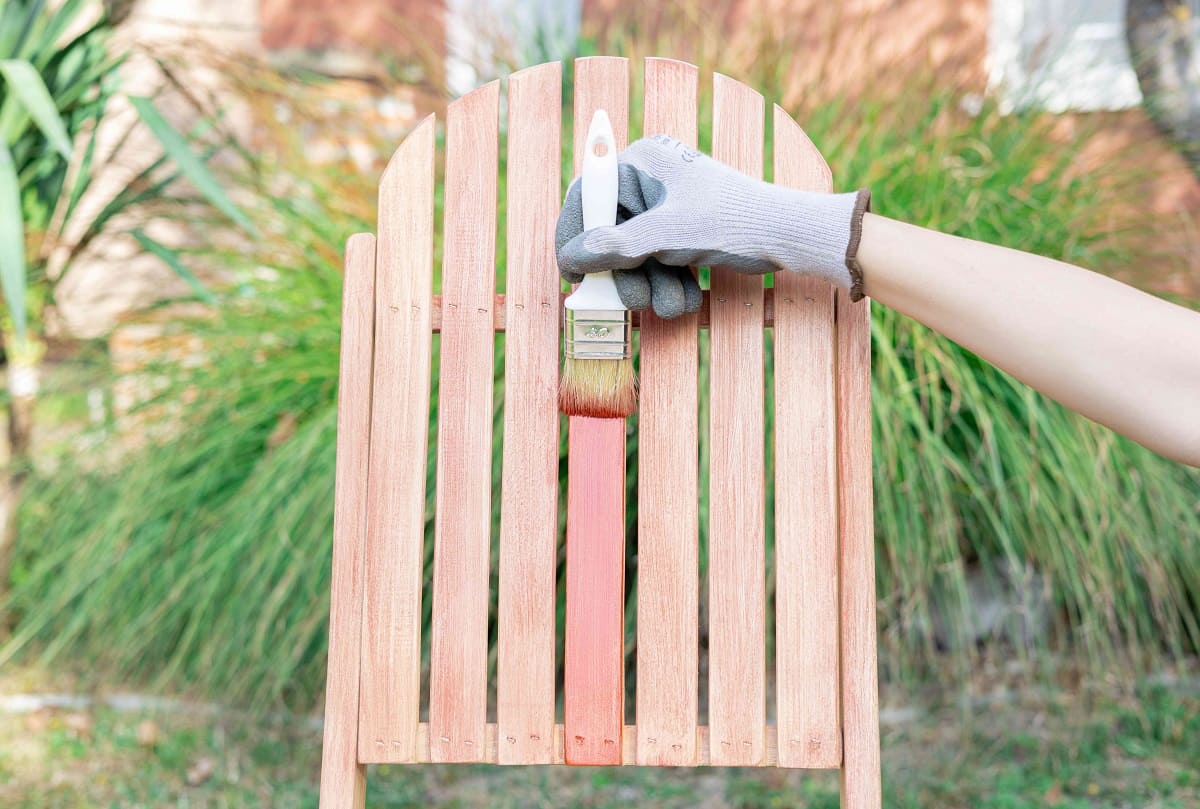
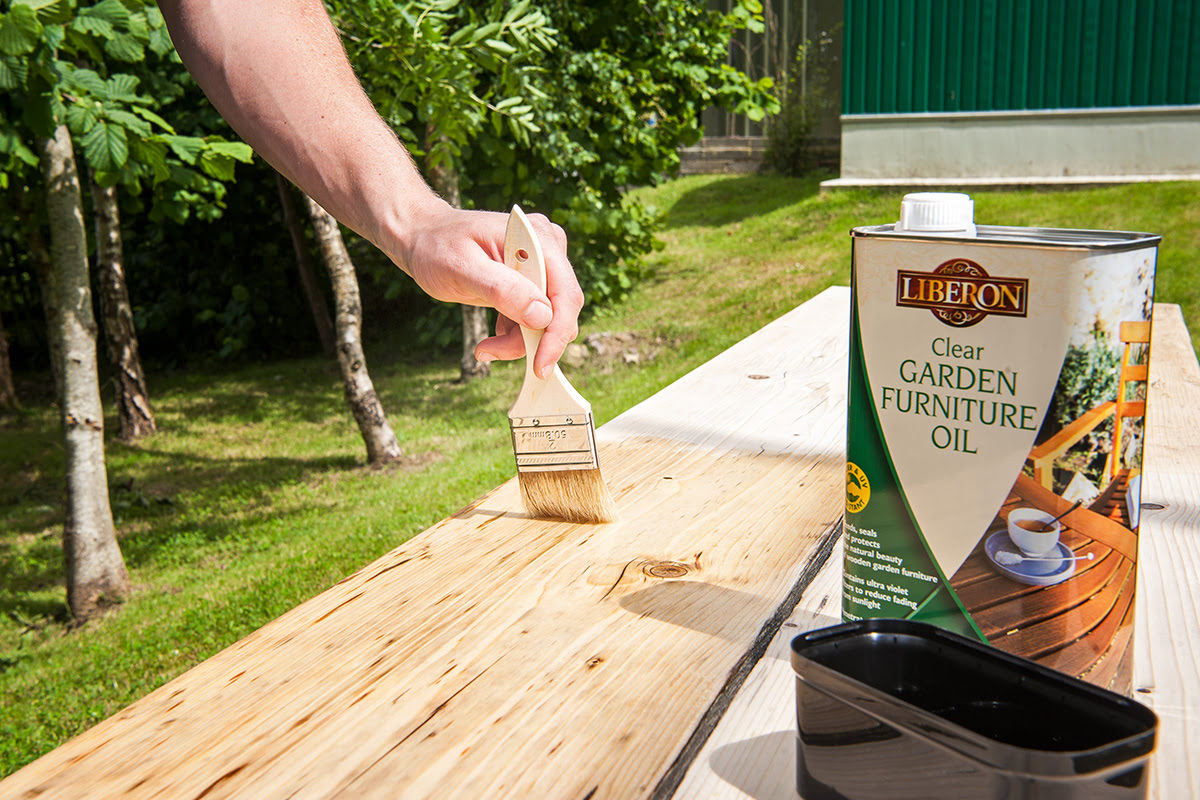

0 thoughts on “How To Waterproof Wood Furniture For Outdoors”